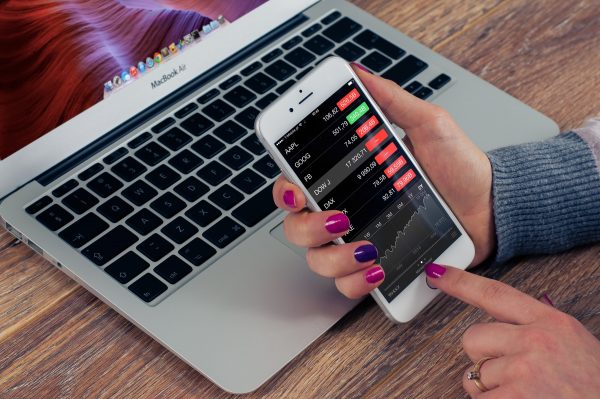Open banking: improving financial services through technology, data and regulation
Fintechs are on the rise and they are offering new personalised products. Banks can act as intermediaries for these improvements by handing data over to third parties through open banking, a model largely supported by APIs that complies with various regulations. It’s both an opportunity and a challenge for the banking sector to experience the ultimate data revolution
New cultural and business paradigms have added the word ‘open’ to key concepts for advancing technology, such as open innovation and open source software. In this new scenario, banks have also realised that they need to be open to a more collaborative economy and to new business models, or to put it another way, to open banking.
This new model means that banks share their customer data with third parties (with the appropriate privacy permissions), to offer more personalised services – something that the 21st century user demands. “The younger generations want digital processes. Now we’re experiencing everything in a more open way thanks to digitisation, which is happening in all industries”, stated Carlos López-Moctezuma, Global Head of New Business Models, Open Banking and Innovation at BBVA, during the BBVA Open Talks Global event held on 29th October, ‘Unboxing the new way of banking, Open Banking’.
The need for a new model
In 2015, the British government fostered the creation of the Open Banking Working Group (OBWG). Its objective was to respond to the need for a new business model that would establish how to regulate the exchange of data with third parties in the financial sector. This is how the term ‘open banking’ was coined, a new revolution with its own name, although it had already been around for a few years.
“There have always been suppliers, but industries were more vertical and less collaborative”, recalled López-Moctezuma during the Open Talks event. However, there came a time when more and more players began to appear in the banking sector. “Competition went through the roof and we began to see countless technology companies and fintechs offering differentiating products at various stages of the service chain”, explained the expert. At the same time, there was more and more customer information, and passing on that data to third parties – with users’ consent of course – could help them to save, make transfers, optimise how they manage their companies, better invest their money and streamline processes.

At the end of the day, as López-Moctezuma concluded, “if there’s a new menu from which they can choose those other services, what does banking need to do to adapt to this scenario? Create experiences that are where customers need them to be”. This is why, as Global Head of Open Banking at BBVA Carmela Gómez explained “we’ve gone from customers approaching banks to ask for what they want to having to anticipate their needs, or allowing a third party to offer them what they want through us”.
For example, “if a customer is purchasing something online and at the end of the process they need financing support, we have to be able to insert financial services into their daily journey”, she added. To do this, BBVA has embraced open banking by offering APIs in different countries via BBVA API_Market, a platform that allows users to find the API that best suits the needs of each business depending on country, sector and type of company.

BBVA’s route to open banking
As well as the existence of a need, the right circumstances had to come about. Gómez explained how “a change in the regulatory framework, customers going through a cultural transformation and the technology that was available helped to transform a possible threat into an opportunity”. One concept that we constantly hear together with open banking is API.
An API, short for ‘Application Programming Interface’, is an interface that allows connectivity and data exchange between two parties, for example between a bank and a fintech. Together with other developments such as cloud computing, digital payments and blockchain, it is one of the technologies that underpins open banking.
As a result, the bank began to create new business models. “We have an API model to form partnerships where we can make banking services available on a platform, so that users can make use of these products”, said the expert. This is the case with the collaboration with Uber, thanks to which BBVA has been a pioneer bank in launching the first financial product in a mobility app.
Juan Carlos Rodríguez, Head of Payments Latin America at Uber, explained the new product launch: “It’s a co-brand card so that, as well as speeding up and simplifying payments to give drivers very quick access to cashflow in emergencies, they also have easy access to banking products”.

In addition, BBVA offers other APIs that can be used “as a channel for our corporate clients to consume their own services,” Gómez indicated. Also, “with banking as a service, the bank is helping third parties that need to build a financial solution to be able to rely on components that are already available from BBVA”.
Regulation to unify APIs
The word API has been used a great deal, but not all open banking services flow through that technology, and this is one of the issues that open banking regulation is trying to address. This regulation is the fruit of a tedious process that lasts for years and varies by country and continent.
“In Europe, regulations require banks to share data if the customer has consented to it. However, the rules do not require an API to be developed. If there is no API, third parties access customer data in another way – by screen scrapping”, according to an interview with Jesús Lozano, manager of Digital Regulation at BBVA, who also took part in the event. Unlike an API, which filters only the required data, the problem with screen scrapping is that the third party can access everything. “They could even see messages between customers and managers”, indicates the expert.
For this reason, an API provides more secure and automated access, as Lozano explains: “It allows the third party to identify itself as such to the entity and you can adjust the information to what they really need to have access to”.
Where Mexico is concerned, “current regulations seek to improve financial services for all sectors and to standardise data, a process that began in 2018″, said Lorenza Martínez, Payments, Finance & Risks Lead at Accenture Mexico. Today, “open data laws have been published and new regulations are expected by the end of the year for transactional data,” she added.
The future, open but regulated
The different types of open banking and the different regulatory frameworks by country generate inconsistencies and risks. For instance, the kind of company that can act as a third party is not always controlled. “In Mexico, for example, you don’t even need a license to give out information”, says Lozano.
According to the expert from Accenture, “after coronavirus, open banking has taken off in some key markets and now it goes far beyond its industry – it affects insurance, automotive, travel, retail, and so on.” For this reason, Martínez looks to the future and considers that “all this data management is important in thinking where we are going to evolve as societies and as global economies”. Over the next few years, the foundations will finish being laid for an open banking system that has already transformed the ecosystem. For now though, come on in – your bank’s door is more open than ever.



